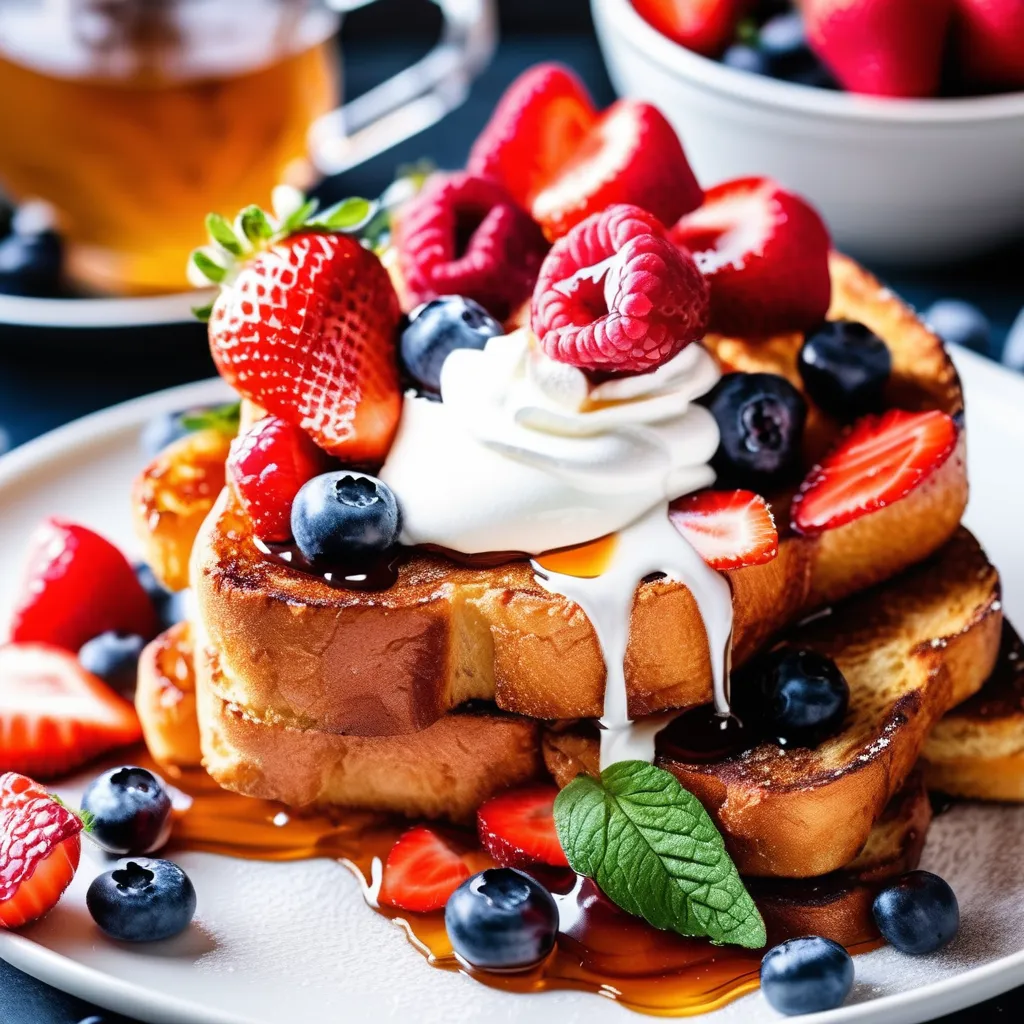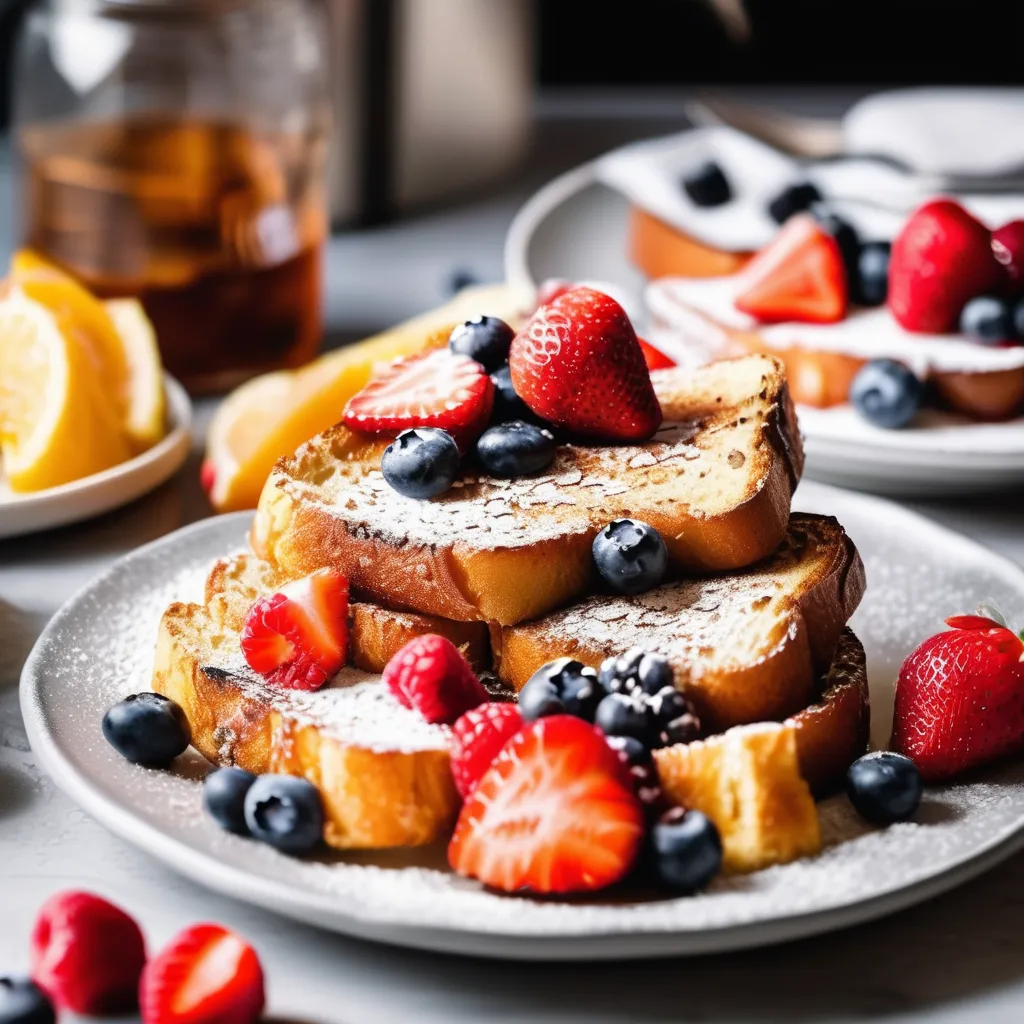
french toast recipe
| french toast recipe |
|---|
The Perfect French Toast Recipe: A Chef’s Personal Experience
Growing up and working as a chef, you always associate some foods with comfort and French toast has always been such a dish for me. Whether I am preparing it in the kitchen of the restaurant for the brunch or preparing it for Sunday breakfast, I have always loved French toast. It’s easy and alluring, and can be made to fit any rooms atmosphere or any occasion. Let me tell you about how I made this dish for my family and friends on the last Thankgiving and give you the recipe that has a pinch of traditional but also something new.
My First Encounter with French Toast
When I was younger, I was just using the white bread and frankly do not see anything wrong with that now. As time went on though I learned that the choice of bread can either define your French toast or not. My go-to now? Brioche or challah. These are the types of bread; they’re moist, easily coated, and slightly buttery yet tough enough to absorb the custard without becoming mushy. That makes them tender when he bit into it yet would achieve that crunchy outer layer of skin when it was fried.
When I want to go a little more homemade, I will often use slices of stale baguette. The bread with a slightly denser crust gives risings an even more chewy consistency and is suitable for complementing savory goodies. Choosing brioche, the bread for sourdough or a croissant, the bread lays the groundwork in the creation of French toast.
The Bread Matters
When I was young I used the basic white sandwich bread but that is okay in expedition requirement. However, the more I got exposed to the kitchen the revelation that the type of bread used in making the French toast dictates the end product. My go-to now? Brioche or challah. These types of bread are great for French toast since they’re somewhat buttery and time honored, but they’re also firm enough to absorb the custard without crumbling. It provides that soft moist feel when rolled and browns well on surface when deep fried.
When I want to downgrade it a bit, I use stale baguette rounds. The crust is slightly tougher making the texture more dense with a perfect companion to savory fillings. Depending on whether you prefer brioche, sourdough or perhaps even a croissant, the bread is the base for your French toast.
Crafting the Perfect Custard
The custard mixture is where you can really infuse your French toast with flavor. Here’s my personal twist on the classic egg mixture:
- 3 large eggs
- 1 cup of whole milk (or half-and-half for a richer soup)
- 1 teaspoon vanilla extract
- 1 tablespoon sugar (depending of your preference though I prefer a little sweetness)
- A pinch of salt
- For warmth and spice add 1/2 teaspoon of cinnamon.
- I gently fold in the eggs last and whisk the batter until there are no lumps appear. The ¼ of teaspoo n of salt might sound surprising, but believe me, it accentuates all the sweetness and makes it less overpowering.
- If you want to give it that special something extra you can always add a small twist of orange zest or a shake of nutmeg. For the children who are house, on cold winter days you can add, a tablespoon of dark rum or bourbon into the custard.

The Frying Process: Golden Perfection
Taking time while frying is crucial in order to achieve the right texture of the french toast. Following dipping the bread slices in the custard (hold them in the custard for approximately 30 sec on each side to imbibe the liquid), I prefer frying them in butter and oil. The butter bring the flavors, while the oil avoids it to burn.
On medium heat warm a skillet and fry the soaked bread mixed with your butter-oil until browed to your preference which should take about 2 to 3 minutes on each side. Do not cook at very high temperatures that make the outside black and the inside raw because that is how the interior goes soft. The end product should be food with a crisp and brown surface together with a tender and more fluid inside.
Elevating the Toppings
This is where you can truly let your creativity shine. Classic powdered sugar and maple syrup are fantastic, of course, but I like to get a bit more adventurous.
- Fresh berries and a dollop of whipped cream are my go-to for a summer version of French toast. The tanginess of the berries cuts through the richness of the custard.
- For a fall or winter treat, I caramelize sliced apples or bananas in butter and brown sugar and spoon them on top with a drizzle of maple syrup.
- Nut butter and sliced bananas work beautifully for a protein-packed breakfast, especially when topped with a sprinkle of cinnamon and chopped nuts.
For a more savory version, try topping French toast with crispy bacon or fried eggs. A drizzle of honey or hot sauce ties it all together in the most unexpected, but delightful way.
My Personal Twist: Stuffed French Toast
I think doing stuffed French toast is one of the most fulfilling creations I’ve done. I take a thick cross-section of brioche and make a small incision right through the middle to form a pocket for cream cheese with the fresh fruits; the preferable options are strawberries and blueberries. Once that happens, the French toast will look more like a dessert rather than bread; crispy outside while tender on the inside.

Memories Made Around French Toast
I’ve made French toast countless times, whether it’s for a quiet morning at home, a special brunch with friends, or an indulgent dinner-for-breakfast night. One of my favorite memories is making French toast for my family on a rainy day, with everyone gathered around the table, warming up with hot coffee and layers of sweet, buttery French toast topped with fresh fruit and whipped cream. It’s one of those dishes that brings people together, creating memories as warm and comforting as the meal itself.
Final Thoughts
French toast is more than just an easy way to have breakfast for a few bites—it is an experience that you can easily make luxurious too. The beauty of it is that it is such a simple concept it is the fun of having a different breads, toppings, and being adventurous in experimentation. That is why whenever I prepare it at work or for the family and friends at home, French toast adds little charm to the dining experience. So the next time you make it don’t be tempted to stick to the recipe—what you produce might just turn out to be one for the ages.



